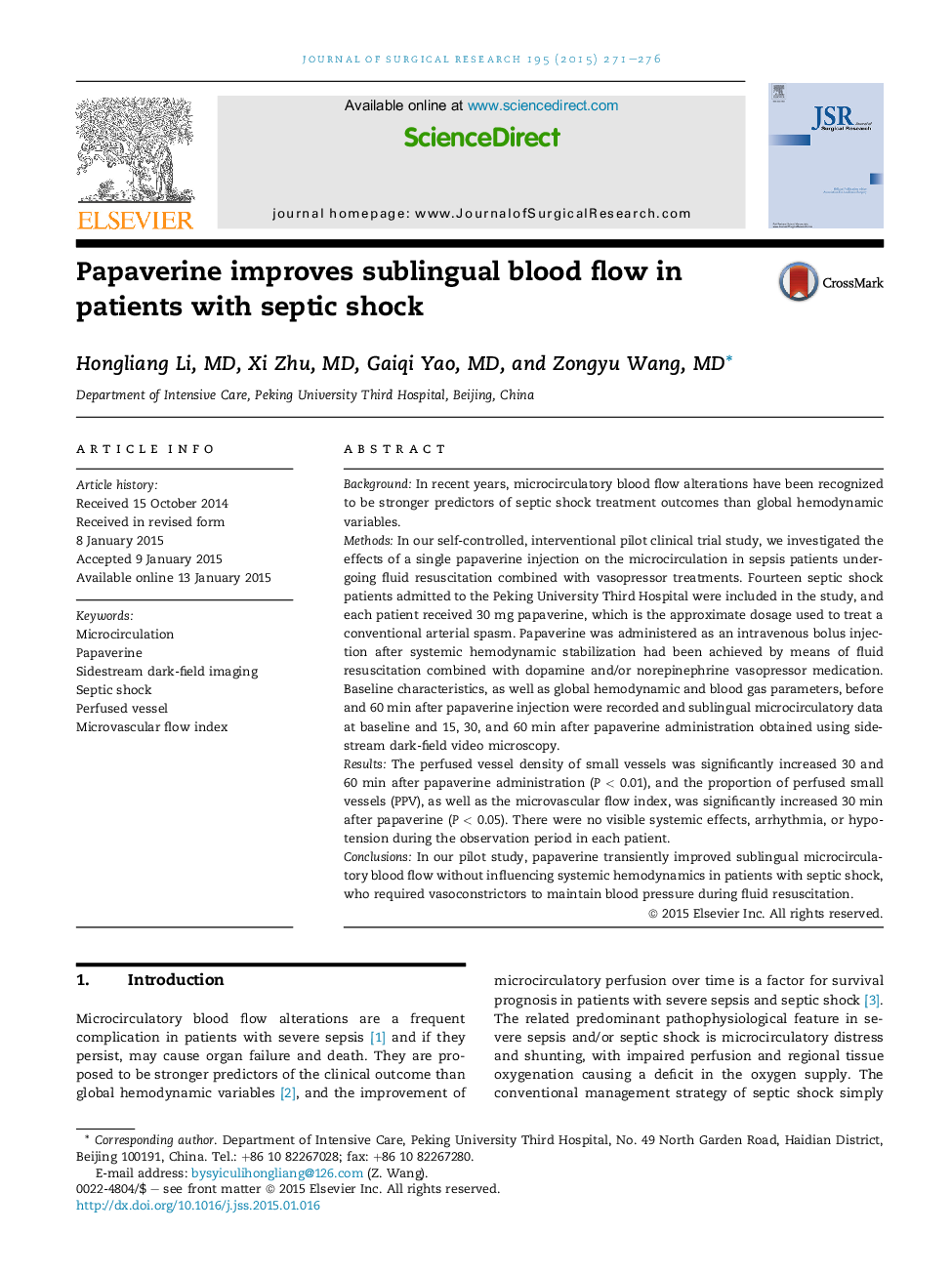| Article ID | Journal | Published Year | Pages | File Type |
|---|---|---|---|---|
| 4299898 | Journal of Surgical Research | 2015 | 6 Pages |
BackgroundIn recent years, microcirculatory blood flow alterations have been recognized to be stronger predictors of septic shock treatment outcomes than global hemodynamic variables.MethodsIn our self-controlled, interventional pilot clinical trial study, we investigated the effects of a single papaverine injection on the microcirculation in sepsis patients undergoing fluid resuscitation combined with vasopressor treatments. Fourteen septic shock patients admitted to the Peking University Third Hospital were included in the study, and each patient received 30 mg papaverine, which is the approximate dosage used to treat a conventional arterial spasm. Papaverine was administered as an intravenous bolus injection after systemic hemodynamic stabilization had been achieved by means of fluid resuscitation combined with dopamine and/or norepinephrine vasopressor medication. Baseline characteristics, as well as global hemodynamic and blood gas parameters, before and 60 min after papaverine injection were recorded and sublingual microcirculatory data at baseline and 15, 30, and 60 min after papaverine administration obtained using sidestream dark-field video microscopy.ResultsThe perfused vessel density of small vessels was significantly increased 30 and 60 min after papaverine administration (P < 0.01), and the proportion of perfused small vessels (PPV), as well as the microvascular flow index, was significantly increased 30 min after papaverine (P < 0.05). There were no visible systemic effects, arrhythmia, or hypotension during the observation period in each patient.ConclusionsIn our pilot study, papaverine transiently improved sublingual microcirculatory blood flow without influencing systemic hemodynamics in patients with septic shock, who required vasoconstrictors to maintain blood pressure during fluid resuscitation.
